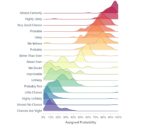
by tyler garrett | Jun 2, 2025 | Data Management
In today’s data-driven landscape, how organizations manage their data lifecycle not only impacts compliance and regulation but also shapes competitiveness and innovation. An effective data retention policy is more than just document management—it’s a strategic lever for competitive advantage, risk mitigation, and data-driven decision-making. While guiding numerous businesses through digital transformation, we’ve found that the technical implementation of data retention policies can often be a challenge, misunderstood or underestimated by technical leaders. Through this guide, we’ll demystify the process, highlighting the best practices, innovative strategies, and tools needed to successfully operationalize a robust, compliant, and strategically aligned data retention policy.
Why a Robust Policy Matters: Aligning Retention to Business Objectives
Establishing a clear, robust data retention policy is fundamentally imperative for businesses keen on extracting maximum value from their data assets. Regulators and standards bodies continually evolve directives to protect privacy, ensure data security, and maintain corporate responsibility, heightening the need for clearly outlined and technically enforced retention practices. However, beyond compliance, systematically managing data allows you to set meaningful operational priorities, improve customer trust, optimize storage costs, and significantly streamline data management overhead.
An effective policy ensures data agility—your capability to leverage relevant data precisely when needed and discard it systematically once obsolete. Strategic alignment to business objectives allows leaders to proactively identify data that drives actionable insights and growth opportunities. Drawing from our extensive experience providing Advanced Tableau Consulting Services, we’ve observed firsthand that clients who integrate solid data policies consistently excel in analytics innovation, creating accurate dashboards and data-driven decision-making mechanisms.
Moreover, a policy backed by thoughtful retention rules helps prevent both accidental data loss and unnecessary retention of non-essential records. Integrating strong technical guardrails around data lifecycles not only enhances agility but proactively protects the organization from potential liabilities and cybersecurity risks.
Assessing Your Data Landscape: Classification and Inventory Strategies
Before defining technical controls, organizations should undertake a thorough data assessment, identifying precisely what information exists, how it’s classified, and where it resides. A comprehensive, catalog-oriented approach provides essential context for retention decisions. Organizations that deploy detailed visualizations and analytics dashboards to categorize and inventory their data achieve improved accuracy and transparency in their retention strategies—a practice we’ve fostered through our dashboard tracing methodologies using Figma and PowerBI.
Classification frameworks should not only label data based on compliance mandates or sensitivity but also include practical analytics categories—such as business-critical operational metrics, frequently utilized analytics sources, or historical data applied regularly for modeling. These classifications directly affect policy rules: high-value analytical data often merits longer retention periods compared to often transient operational data. Making the effort to visually and analytically inventory your data landscape provides insights into how your business uses or could leverage retained information, directing your entire retention strategy strategically.
Combine this detailed inventory with accurate dependency mapping to efficiently track data lineage. Leveraging techniques from visual binning strategies for continuous data variables helps further segment and prioritize data groups based on their retention durations and importance.
Implementing Retention Policies: Technical Controls and Workflow Automation
Once categorized and inventoried, the next strategic step involves implementing technical controls aligning directly with your policy requirements. Automating these retention workflows ensures accurate and consistent adherence, minimizing risk and reducing manual interventions dramatically. Technical strategists and decision-makers should leverage modern data pipeline practices that build retention into the processing lifecycle, governing data archival, deletion, or migration seamlessly and automatically.
Centrally managing retention rules through configurable data pipeline templates simplifies data management immensely. Leveraging approaches described in our article on generic pipeline templates with configuration inheritance enables a scalable retention approach. Such pipeline templates automatically propagate retention rules across organizational data resources without added complexity or overhead, creating consistency across data teams.
Furthermore, organizations should integrate robust scheduling and dependency resolution mechanisms, as highlighted in our comprehensive guide on data pipeline dependency resolution and scheduling. These technical strategies synchronize retention policy actions effectively, enabling automated, regulatory-compliant data lifecycle management processes and workflows.
Monitoring and Maintenance: Establishing Metrics, Dashboards, and Golden Signals
Measurement and observation play critical roles in the ongoing success and effectiveness of your retention policy implementation. Establishing robust monitoring practices ensures your technical controls remain resilient and proactive. Leaders should choose specific retention policy-related KPIs and metrics, creating monitoring dashboards to highlight these information points clearly. Monitoring recency of archived and destroyed data, retention compliance rates, data storage cost savings, and identification of stale data can provide insightful signals to stakeholders.
Applying monitoring principles developed from the concept of golden signals for data pipelines facilitates an effective viewpoint on retention policy management over time. These signals—latency, errors, throughput, and saturation—capture not only the effectiveness of data pipeline structures but also underline metrics relevant to user experience and compliance impact for retention workflows.
Through our experience, we’ve recognized the power of timely and clear visual analytics. This can be incorporated into retention policy monitoring to gain actionable insights, complemented by rapid user feedback and adjustments, to gradually refine and optimize the technical implementation continually.
Scaling Technical Implementation Across the Enterprise
Organizations must strategize carefully as they mature in data retention practices to ensure they scale effectively across the enterprise. Selecting tooling and processes widely adoptable among diverse stakeholders within your organization is vital. Special care is needed to balance enterprise-level standardization with flexibility to accommodate analytic innovation, business unit variability, and regional data compliance concerns.
Working directly with technical strategists familiar with various enterprise sizes and cultures makes a significant difference in achieving successful scalability. Deliberately deciding whether your organization benefits more from working with grassroots consultancies versus enterprise consultancies is essential. Grassroots consulting companies typically offer more direct engagement, personalized approaches, and innovative solutions. Conversely, larger, enterprise consultants provide standardized processes, formalized governance strategies, and broad enterprise-wide experience. Choosing the right partner significantly impacts long-term policy penetration and effectiveness.
Regardless of your selection, consistent and thorough documentation, robust version control practices, and strong governance models will enable organic scalability and sustain momentum for retention policy adoption throughout your business units and functions effectively.
Driving Value and Innovation through Strategic Data Retention Practices
Approaching data retention thoughtfully creates immense potential beyond strict compliance; it uncovers untapped strategic value and positions organizations to innovate proactively. By integrating easy-to-follow retention rules into your technical infrastructure, your analytics platforms become quicker to refresh, more organized, and better-performing, directly improving the analytics experience for end-users.
Additionally, quicker data access and clearer lifecycle management serve as powerful catalysts for rapid analytics innovation—as proven in our study about driving value with quick API consulting engagements. In essence, data availability, quality, and trustworthiness, fostered through structured retention strategies, significantly expedite overall analytics delivery processes.
A robust technical setup, strategic alignment, and innovative implementation collectively amplify operational efficiency, reveal deeper analytical insights, mitigate compliance risks, and ultimately deliver substantial competitive advantages in data-driven organizations.
Implementing a data retention policy strategically positions you firmly at a competitive vantage point—enabling proactive adaptation to emerging regulatory landscapes, fostering innovation in analytics, and strengthening data-driven culture and maturity across your enterprise.
Thank you for your support, follow DEV3LOPCOM, LLC on LinkedIn and YouTube.

by tyler garrett | Jun 2, 2025 | Data Management
In today’s fast-paced data-driven landscape, organizations strive to become increasingly agile, responsive, and capable of turning raw data into actionable insights. A well-designed Data Catalog API plays a critical role in streamlining metadata management, boosting data governance, and enabling accelerated business intelligence. As data continues to proliferate across various storage systems, departments, and cloud environments, programmatic access to metadata transforms into a strategic asset, empowering data scientists, engineers, and analysts alike. By harnessing a powerful API, your organization can unlock automation and innovation opportunities by reliably accessing your metadata catalog. In this blog post, we’ll explore best practices, strategies, and considerations for designing a Data Catalog API that fully leverages your metadata resources, dramatically transforming insights and enabling smarter decision-making.
The Strategic Significance of API-Driven Catalogs
In an enterprise context, data catalogs traditionally relied on manual procedures and static documentation. This often resulted in outdated information, frequent delays, and ambiguous insights, making it challenging to maintain pace in agile industries. The advent of API-driven data catalogs represents a strategic turning point, offering dynamically accessible metadata that links directly with modern development and analytics workflows.
API-based catalogs enable organizations to tap into powerful automation via DevOps practices, significantly improving the efficiency of metadata management. A robust Data Catalog API enriches analytics pipelines and seamlessly integrates with applications created through Node.js consulting services, significantly enhancing your ability to respond quickly and accurately to today’s data demands.
Furthermore, API-enabled catalogs encourage integration with data lakehouse implementations, bridging the gap between data lakes and data warehouses by consistently providing accurate and current metadata. This facilitates superior governance, improved compliance oversight, and reduced discovery time for data teams. In essence, APIs distribute metadata efficiently and open doors to real-time consumption and scalable transformations, positioning your business to gain lasting benefits from automated metadata insights.
Key Principles of Data Catalog API Design
Consistency & Standards Compliance
A fundamental principle when designing your Data Catalog API involves consistency and adherence to accepted industry-standard protocols. Following RESTful API design patterns is crucial to ensuring predictability and straightforward adoption. APIs must leverage standard HTTP methods—GET, POST, PUT, DELETE—to manipulate metadata resources intuitively. Using consistent naming conventions, logical resource paths, and standard HTTP status codes is vital for error handling, making APIs easy to understand and implement.
Compliance with universally respected specifications like OpenAPI or Swagger is recommended to facilitate seamless documentation generation and accelerate developer onboarding. Structured, machine-readable representations boost usability, enabling better integration with CI/CD pipelines, API gateways, and developer tooling. Standards allow for smoother automation and smoother interplay between API clients, significantly enhancing your metadata-driven workflows. Read more on automation’s strategic role in DevOps to appreciate how standardized API principles directly benefit continuous development cycles.
Performance & Scalability
Your Data Catalog API must cater to scenarios involving extensive metadata records, expanding datasets, and intensive programmatic queries. Allocating necessary resources for performance optimization should remain a priority—clearly defining pagination strategies, supporting filtering, sorting, selective field retrieval, and enabling advanced search capabilities. Efficiently serving metadata encourages integrations that power strategic initiatives such as historical sales analysis and demand forecasting.
Scaling horizontally via cloud-native solutions, microservices architectures, serverless computing, or content distribution networks allows your Metadata API to gracefully handle increased workloads. Focus on response caching strategies for static metadata and explore contemporary scaling patterns such as auto-scaling based on demand. Ensuring APIs scale efficiently unlocks seamless integration across departments, teams, and complex cloud environments.
API Functionalities for Effective Metadata Management
Metadata Discovery & Search
An effective Data Catalog API should equip consumers with intuitive and powerful mechanisms for locating and discovering essential data assets. Advanced search and indexing functionalities, coupled with intelligent filtering mechanisms and rich metadata context, significantly enhance data identification efficiency. API queries should support discovery based on data sources, business glossary terms, tags, classifications, and other vital metadata attributes, effectively empowering business intelligence, analytics, and governance initiatives.
Programmatic metadata access is essential for unlocking automated solutions. With effective API-enabled discovery, organizations can utilize metadata in automated analytics workloads, data enrichment pipelines, and governance processes efficiently and at scale. Offering personalization strategies, predictive results ranking via analytics, and relevance scoring allows metadata to become truly usable and actionable. Smarter search capabilities deliver quicker insights and more precise answers for data-driven decision making.
Metadata Versioning & Lineage Tracking
Modern enterprises handle evolving datasets thus necessarily addressing changes to metadata over time. Implementing version control and data lineage through APIs provides transparency and traceability, capturing snapshots and changes across assets, tables, fields, and definitions historically. APIs which enable lineage tracking not only improve data governance and compliance workflows but also add significant value to analytics processes, clearly outlining data transformations from source ingestion to final consumption.
A sophisticated metadata lineage API empowers analysts and data scientists to diagnose data discrepancies proactively, improve trust around analytics outcomes, and respond swiftly to regulatory audits. These distinct capabilities integrate effectively alongside other enterprise-grade strategies such as data integration pattern libraries, facilitating reusable solution templates and enhancing enterprise operational efficiency.
Integration Capabilities and Extensibility
Designing an API that seamlessly integrates with the organization’s broader technology landscape is crucial to maintaining strategic alignment and maximizing return-on-investment. Implementing integration-friendly APIs simplifies interactions, providing SDKs and robust documentation tailored toward diverse stakeholders within your teams. Clearly document SDK use cases, facilitating easier database connections, business intelligence tool integrations, and advanced data analytics environments.
Moreover, open and easy-to-integrate APIs accommodate future needs, positioning your data catalog with scalability in mind. Ensuring metadata is accessible effortlessly by analytics platforms, BI tools, data science workflows, or cloud-based systems, establishes strategic extensibility. Future-proof API designs promote robust connectivity and enable your teams to seamlessly complement developments like columnar and document-based storage.
Furthermore, designing reusable endpoints or webhook configurations helps trigger metadata-driven automation tasks based on catalog events or real-time asset changes, establishing higher operational agility. Extensible API practices make metadata accessible programmatically and continuously adaptive to changing business requirements.
Security and Authentication for Data Catalog APIs
Metadata often contains sensitive information, making security a critical component of effective API design. Organizations must implement robust secure authentication measures such as OAuth 2.0, API keys, and JWT tokens, ensuring identity management is thoroughly safeguarded. Moreover, granular access controls, clear role-based permissions, and fine-grained authorization policies should secure resources from unwanted access or unintended disclosures.
Consider employing comprehensive API monitoring and audit logging capabilities suitable for compliance and governance requirements. Constant monitoring of API requests, error conditions, and usage patterns improves controls and identifies vulnerabilities proactively, continuously protecting your strategic digital initiatives and broader data ecosystem.
Incorporating security features into your API designs alongside enrichment tools—such as those discussed in this overview of image processing automation using Python techniques—contributes to an enterprise-wide philosophy of safe and secure data innovation.
Conclusion: Embracing API-Driven Metadata Innovation
An API-driven Data Catalog transforms metadata management from a static, manual effort into a highly automated, dynamic driver of organizational intelligence. By following strategic API design principles and integrating seamlessly within your organization’s technology framework, businesses can reliably leverage metadata to quickly realize value from data-driven initiatives. As the data landscape continues to advance, ensuring your Data Catalog API is strategically sound, secure, scalable, and integrateable positions your enterprise for continued innovation, agility, and ultimately, successful business outcomes.
Thank you for your support, follow DEV3LOPCOM, LLC on LinkedIn and YouTube.

by tyler garrett | Jun 2, 2025 | Data Management
In today’s rapidly evolving landscape where operations span across various platforms and geographic locations, decentralized organizations encounter unique challenges in governing their vital asset: data. API-based data governance emerges as a robust solution, offering transparency, flexibility, and efficiency to organizations navigating decentralized structures. Leveraging the power of Application Programming Interfaces (APIs), decentralized organizations can implement scalable and automated policies, ensure data compliance, and seamlessly integrate systems that proactively manage data quality, privacy, and availability. In this strategic exploration, we will delve into how API-led data governance can reinforce trust, compliance, and innovation, enabling leaders and decision-makers to harness insightful analytics while fueling data-driven decisions. Join us in uncovering how an API-oriented approach facilitates secure yet democratized access across decentralized ecosystems, unlocking powerful insights and enhancing your organization’s data-driven capabilities.
Understanding API-Based Data Governance
An Application Programming Interface (API) is essentially a digital glue, connecting disparate systems, applications, or data sources, enabling seamless interactions and communication across complex organizational frameworks. When applied strategically to data governance, APIs can govern and streamline data flow, manage user access, ensure data quality, and enhance interoperability. For decentralized organizations that frequently contend with fragmented and siloed data structures, API-based governance provides a cohesive backbone, ensuring consistency and compliance across the enterprise.
Unlike traditional, rigid governance frameworks that struggle with changing dynamics, API-based solutions offer flexibility. A well-designed, API-oriented governance strategy can adapt to evolving regulations, new technological advancements, and shifting organizational priorities without extensive modifications. Moreover, APIs simplify the automation of standard governance rules such as data masking, authentication, authorization, and auditing. For example, organizations dealing with critical customer-facing analytics require stringent control and visibility; our in-depth exploration on masking and tokenization in sensitive ETL processes highlights concrete methods reinforced by API governance.
By standardizing governance practices through intelligent APIs, decentralized businesses empower cross-functional teams while ensuring enterprise-wide policy alignment. This effectively democratises data access without compromising security or control, significantly improving productivity and strategic agility.
Why API-Based Governance Matters in Decentralized Structures
Decentralized organizations often possess numerous data repositories distributed across multiple geographic regions or business units. Without streamlined and standardized governance, accurate and timely data analytics becomes increasingly difficult, impacting essential decision-making processes. API-based governance effectively addresses these challenges by establishing unified governance procedures, even within highly distributed structures.
For instance, a company with globally dispersed analytics teams must ensure each team accesses accurate, timely, and compliant data to optimize customer experiences. As discussed in our expert blog—5 ways analytics and data engineering enhance customer experience—consistent customer data management is paramount for delivering robust customer insights and analytics. API-based governance creates transparency and uniformity in enforcing data quality standards and eliminating inconsistencies, thus resulting in trustworthy insights.
Furthermore, APIs enable real-time governance functionalities, crucial for decentralized organizations navigating compliance requirements across jurisdictions. When data regulations evolve—GDPR or CCPA, for instance—the organization can quickly propagate compliance updates via APIs, ensuring immediate adaptability, minimizing manual modifications, and significantly mitigating risks related to data privacy and regulatory noncompliance.
Key Benefits of Implementing API-Based Data Governance
Improved Security and Compliance
An essential advantage of API-centric governance is enhanced security and compliance enforcement. APIs facilitate the streamlined automation of compliance tasks such as authentication and authorization, data encryption, logging, monitoring, and auditing. Consistent API-based controls help decentralized organizations securely share data internally and externally without jeopardizing regulatory compliance or data security.
APIs can implement mechanisms like role-based access control and attribute-based access control through policies enforced consistently at scale. Our discussion around managing sensitive information during transformations in data ETL masking and tokenization underscores the criticality of maintaining data security, a benefit directly enhanced through APIs.
Scalability and Flexibility
API integrations are inherently modular and designed for scalability and integration flexibility. In decentralized organizations, APIs allow data governance solutions to scale quickly across geographies and environments. Dynamic APIs ensure easy adaptation to new uses cases, technologies, and regulatory environments without significant redesign or restructuring of existing governing structures.
For enterprises needing advanced analytics capabilities—such as those highlighted within our advanced analytics consulting services—scalable governance becomes indispensable. APIs provide an adaptable foundation upon which innovative analytical tools can thrive securely.
Democratizing Data Access for Innovation
Decentralized organizations thrive when data democratically fuels informed and empowered decisions at all levels. APIs open this possibility securely through controlled federation—delivering data exactly where needed in a governed, secured manner. By facilitating controlled internal and external interactions, APIs empower organizations to refine analytics-driven innovation, as detailed in our post about uncovering growth potential through data analytics.
Integrating API-Based Governance into Your Data Strategy
Successfully integrating API-based governance into your decentralized organization’s data strategy starts with clearly defined goals and understanding audience needs. It requires keen awareness of the analytics requirements and diverse user roles interacting with the data. These early insights guide API governance design, ensuring alignment with organizational objectives.
Smart integration means ensuring stakeholders understand the insights derived from data visualizations as detailed in our guide—Understanding your visualization’s purpose and intended audience. Purpose-built APIs enable teams to incorporate analytics seamlessly into their everyday workflows and strategic decision-making routines. Additionally, the integration of capabilities from analytics and visualization platforms, such as Tableau software, can be informed effectively through understanding factors like Tableau pricing and leveraging custom visualization such as custom legend designs for complex visual encodings.
A mature API-based data governance strategy will also leverage continuous talent development and transitions, equipping software engineers to become skilled data engineers, an area we explore in depth in our article on career transitioning to data engineering.
Challenges and Best Practices for API-Based Data Governance
Implementing API-based governance, though valuable, comes with certain challenges such as gaining stakeholder buy-in, managing legacy technologies, and ensuring data privacy compliance. Achieving alignment across decentralized units can be complex but achievable through strategic planning, technical leadership, and clear communication.
Best practices begin with a robust leadership commitment establishing clear governance guidelines codified into the API offering. Prioritizing data quality is critical, as is implementing an automation-first philosophy, minimizing manual efforts, errors, and compliance risks. Technical documentation, clear communication, and frequent learning opportunities help facilitate widespread adoption across decentralized teams—enabling personnel to confidently approach and utilize data.
The API-based framework’s success hinges significantly on powerful visualization and analytics communication channels—crucial in achieving broad support for initiatives. As highlighted in our expertise-driven insights around the importance of data visualization in data science, capturing attention and aligning motivations improve strategy deployment outcomes.
Final Thoughts: APIs as the Backbone of Decentralized Data Governance
Decentralized organizations demand cutting-edge practices to conquer obstacles posed by siloed environments, compliance complexities, and data inconsistencies. API-based data governance explicitly fulfills this demand. Its power lies within its inherent scalability, superior security, real-time capabilities, and impressive flexibility.
Organizations prioritizing innovation must address governance holistically, embracing API-driven solutions capable of democratizing data access responsibly. Evolving confidently into decentralized structures demands strategic adoption, intelligent implementation, clear documentation, and continuous improvement mechanisms that APIs naturally reinforce. Ultimately, unlocking intricate analytics insights and propelling sustained organizational innovation becomes possible through sophisticated API-based governance frameworks.
Thank you for your support, follow DEV3LOPCOM, LLC on LinkedIn and YouTube.

by tyler garrett | Jun 2, 2025 | Data Management
In a rapidly evolving digital landscape, enterprises contend with vast volumes of data flowing across hundreds of disparate applications, databases, and cloud platforms. As data pile-ups grow exponentially, organizations find themselves encumbered by redundant data structures, conflicting semantics, and increased integration complexities. The inability to reconcile disparate data sources slows your decision-making, inhibits innovation, and creates operational inefficiencies. Implementing a robust and consistent enterprise canonical data model (CDM) offers a solution—providing a uniform, application-agnostic data structure that ensures coherence, re-usability, and efficient integration. This comprehensive methodology will explore not only how leveraging proven techniques accelerates digital transformation but also how aligning your canonical model with strategic objectives positions your organization to extract maximum value from its data.
Understanding Canonical Data Modeling—The Foundation for Enterprise Integration
A canonical data model represents an abstracted schema that defines a standardized vocabulary across enterprise systems. Unlike traditional integrations with point-to-point communications, a canonical approach acts as a universal translator, simplifying integration processes through standardization. This fundamental concept alleviates complexity, reduces development costs, and streamlines information exchange. By articulating a clear, common language across business units and technology teams, organizations can diminish miscommunications and maintain semantic consistency, allowing businesses to adapt faster to evolving technological and market environments.
Moreover, a canonical model provides critical foundational support for implementing robust analytics solutions. Leveraging a standardized data definition enhances enterprise-wide reporting accuracy and accelerates decision-making processes. Organizations employing canonical modeling expertise often experience improvements in historical sales analysis accuracy, positioning themselves strongly for predictive analytics and insightful forecasting.
Adopting a clear canonical data model approach sets the stage for strong and robust data governance practices. A standardized data approach improves data traceability, supports easier audits, and elevates overall data integrity. Enterprises that embrace canonical methodologies quickly uncover significant operational efficiencies achieved by this level of clarity.
Phase One: Requirements Gathering and Stakeholder Alignment
Embarking on a successful canonical data modeling initiative requires a solid understanding of foundational business objectives, strategic imperatives, and technological constraints. Key business leaders, data engineers, data architects, analytics specialists, and infrastructure teams should engage in collaborative workshops. These sessions ensure alignment, clarify expectations, and solidify the scope of the enterprise canonical data model. Encouraging input from diverse organizational units helps build a robust model that reflects underlying complexities while promoting comprehensive adoption.
Enterprise stakeholders identify key performance indicators (KPIs), reporting needs, and data elements critical to organizational insights and operations during this phase. Clearly defining these provides a sense of data ownership, accountability, and transparency that supports user acceptance and future scalability. Additionally, naming conventions, definitions, business glossaries, and data dictionaries should be standardized early to form the basis of your organizational shared vocabulary.
As organizations strive to enhance their decision-making and leverage advanced analytics, linking the canonical data model’s objectives with future-focused analytics initiatives, such as progressive disclosure in data visualizations, helps keep strategic objectives front and center. Comprehensive stakeholder engagement ensures that evolving business analytics needs and new analytical visualization deployments remain potential extensions of the canonical data model.
Phase Two: Designing Your Canonical Blueprint—The Art of Abstraction
Structuring your canonical data model requires thoughtful design, reflecting attributes of flexibility, simplicity, and scalability. Your model serves multiple systems, applications, and analytical requirements, demanding careful abstraction strategies to ensure compatibility and versatility. Here, developers move away from rigid data structures and embrace generalized data models that can evolve alongside business requirements. Designing at this level ensures fewer iterations, lower costs, and maximum adaptability.
An excellent canonical model maintains a prudent balance—abstract enough to remain reusable yet concrete enough to deliver practical business value. Data architects and modelers apply strategic modeling techniques such as entity-relationship modeling and normalization to refine data elements, establish relationships, and guarantee a cohesive information hierarchy. Incorporating established modeling approaches helps organizations create future-proof data migration strategies, ensuring the consistency of your scalable data infrastructure as your operation evolves and grows.
In this design phase, planning for enhanced data security becomes paramount. Evaluate and embed privacy, access controls, and compliance considerations into your canonical data model early, protecting sensitive organizational assets from increasingly sophisticated threats like those discussed in our article on enhanced data security in the quantum era.
Phase Three: Implementing and Integrating the Canonical Framework
Implementation of the canonical data model involves extensive and precise alignment with existing enterprise infrastructure. Integration architects must assess legacy systems, cloud deployments, data pipelines, and database structures, ensuring seamless data flow. At this stage, a flexible integration framework is vital. Modern enterprises leverage middleware, APIs, microservices, and advanced integration tools that transform and harmonize data schemas across various systems into a cohesive canonical layer.
Successful deployment requires rigorous testing and validation, powered by continuous integration and delivery (CI/CD) methodologies. For a comprehensive pathway to optimizing your deployment lifecycle, leveraging modern developmental approaches such as those highlighted in our guide on building your CI/CD pipeline ensures efficient, scalable, and reliable rollouts.
Aligning integration efforts to specific analytical or geographical requirements optimizes enterprise operations further. For instance, enterprise-wide data modeling supporting geospatial data harmonization should consider implementing advanced visualization techniques such as cartogram implementation for geospatial data distortion, greatly improving analytical insight and strategic effectiveness.
Phase Four: Governance, Continuous Improvement, and Evolution
A canonical data model isn’t a static asset—it evolves continuously alongside your enterprise growth, technological advancements, and changing market conditions. Instituting solid governance structures ensures clear stewardship, accountability, and ownership to manage change effectively across data definitions, policies, and architecture. Governance committees regularly convene to evaluate data model performance, monitor compliance, resolve conflicts, orchestrate modifications, and ensure consistency across enterprise operations.
Monitoring and continuous improvement are crucial components integrated into governance frameworks. Regularly assessing data quality, usage metrics, and performance KPIs generates valuable feedback, aiding in refining and expanding the model. As the market and organizations become increasingly digital, leveraging innovative technologies and methodologies becomes most significant. A progressive canonical data model implementation provides the groundwork necessary to adopt advanced analytics, artificial intelligence, machine learning, and progressive visualization interfaces. Investing this foundational momentum showcases organizational commitment toward continually innovating for competitive advantage.
Finally, organizational transparency and ongoing communication play critical roles in successful canonical deployments. Regularly informing stakeholders, users, developers, and data stewards fosters understanding, encourages collaboration, builds trust, and maintains momentum toward strategic enterprise digital transformation.
Conclusion: Maximizing Your Enterprise Canonical Data Model Investment
From improving enterprise-wide decision-making capabilities to creating resilient data integrations that consistently deliver reliability and accuracy, canonical data models fundamentally elevate your organization’s digital maturity. Achieving long-term success requires meticulous planning, stakeholder collaboration, robust governance, and constant refinement.
Enterprises harnessing canonical data modeling accelerate innovation and achieve operational excellence, while simultaneously preparing their organization for advanced digital strategies. Whether you specifically aim toward optimizing data warehousing via data warehousing consulting services or establish a new standard in enterprise analytics and security, your journey toward a sustainable data strategy begins with embracing the canonical approach. Make the right investments today, and your digital future will undoubtedly drive sustained business success tomorrow.
Thank you for your support, follow DEV3LOPCOM, LLC on LinkedIn and YouTube.

by tyler garrett | Jun 2, 2025 | Data Management
Today’s vast digital universe demands intelligent solutions capable of connecting and contextualizing information intuitively. Organizations grappling with mountains of data often find traditional methods of metadata discovery falling short in delivering comprehensive insights. Enter Knowledge Graphs—a transformative technology reshaping how enterprises manage, interpret, and leverage metadata. With their ability to interconnect diverse types of data into meaningful semantic webs, Knowledge Graphs empower decision-makers to navigate information efficiently, unlocking deeper understanding and actionable insights. In this article, we’ll explore the essence of Knowledge Graph implementation, its role in metadata discovery, and the strategic advantage it provides in a hyper-connected digital environment.
Understanding Knowledge Graphs and Metadata Discovery
A Knowledge Graph is essentially a highly structured and interconnected dataset that organizes information using semantic classifications. Unlike traditional silos of databases, Knowledge Graphs establish relationships between entities (people, places, concepts, and objects), allowing for contextual awareness and dynamic information retrieval. They form the backbone of innovative applications, enabling robust semantic querying and comprehensive data visualization.
Metadata discovery, on the other hand, involves locating, assessing, and interpreting metadata—data about data—to understand the structure, content, quality, and interrelationships within datasets. Combining Knowledge Graphs with metadata discovery allows businesses to explore connections, retrieve relevant insights efficiently, and enhance data discoverability across their organization. By empowering metadata discovery through semantic relationships, organizations unlock powerful contextual understanding and actionable intelligence, thus significantly enhancing decision-making capabilities.
Implementing Knowledge Graphs can complement your company’s broader data strategy—an approach we emphasize extensively in our comprehensive overview of the data-driven mindset. This framework helps cultivate the mindset necessary for embracing cutting-edge innovations like Knowledge Graphs, enabling leaders to stay ahead of the curve in today’s competitive landscape.
Key Benefits of Integrating a Knowledge Graph Solution
Improved Contextual Understanding and Insight Generation
The primary advantage Knowledge Graphs bring to metadata discovery is contextual awareness. By structuring metadata around semantic relationships, deeper and more meaningful insights can be extracted, reducing ambiguity and improving the accuracy of data interpretation. Analysts can discover hidden connections across datasets, leading not only to better analytics but also proactive business strategies.
At Dev3lop, our advanced analytics consulting services emphasize harnessing such strategic intelligence. Knowledge Graphs enable analytics processes to accurately reflect real-world connections, guiding enhanced decision-making rooted in interconnected information. For example, Knowledge Graphs applied to marketing data can result in sophisticated, impactful insights—as we demonstrated through the recent release of our Colibri Google Analytics Tableau Dashboard, connecting website metrics into meaningful semantic contexts for superior analytical clarity.
Leveraging semantic technology further improves data reliability and trustworthiness—a necessary condition for effective visualization highlighted in our detailed article on collecting and cleaning data accurately. By establishing clear relationships and structures, Knowledge Graph solutions advance data quality throughout metadata discovery processes.
Enhanced Searchability and Data Accessibility
One persistent challenge businesses face is locating relevant metadata efficiently within massive datasets. Knowledge Graph implementation directly addresses this issue by enabling intuitive search and exploration. Utilizing semantic relationships and entity-based connections, Knowledge Graphs support advanced semantic queries and highly targeted search capabilities, drastically reducing the time spent locating pertinent information.
The comprehensive and rapid semantic queries provided by Knowledge Graph solutions empower data-driven teams, allowing them to swiftly identify specific data points or patterns. This supports integrative techniques such as multi-modal sensory analytics, where different data modalities—audio, visual, and text datasets—can be integrated effortlessly using semantic technologies.
Additionally, semantic searchability enhances real-time accessibility, paving the way for dynamic large-scale data applications such as those referenced in our exploration of revolutionary quantum computing applications. Integrating Knowledge Graph capabilities in metadata discovery elevates the accessibility, usability, and efficiency of gaining valuable insights from complex and evolving datasets.
Technical Approaches to Implementing Knowledge Graphs
Semantic Data Modeling and Ontologies
To build effective Knowledge Graphs, organizations begin with semantic data modeling—a systematic approach that clearly defines entities, relationships, and their attributes. This approach organizes disparate and heterogeneous data sources into coherent and structured ontological frameworks. These ontologies define concepts and categories to capture complexity, supporting the interconnection of metadata entities across various sources and ensuring consistency throughout the graph.
Ontologies also aid in implementing rigorous business rules within your Knowledge Graph, similar to those highlighted in our detailed analysis of business rules engines in data transformation logic. Clearly defined semantic models promote improved consistency, accuracy, and integrity when applying specialized business rules.
Moreover, advanced semantic modeling benefits from customized extensions via customized user-defined functions—a method Dev3lop has adopted extensively. For more information on this topic, check out our article on custom UDF development, which provides personalized, scale-appropriate solutions to support intricate semantic modeling needs across complex datasets.
Graph Databases and Integration Strategies
A robust graph database is the backbone of any successful Knowledge Graph implementation, providing optimized storage solutions capable of dealing efficiently with relationship-intensive data structures. Popular graph databases, such as Neo4j, AWS Neptune, and TigerGraph, facilitate efficient querying, data retrieval, visualization, and analytics capabilities within Knowledge Graphs.
Integration efforts play a critical role when implementing graph databases into existing data infrastructure. Successfully integrating graphs within the broader data analytics ecosystem involves considering streaming solutions, batching architectures, and probabilistic approaches. To support these efforts, utilizing powerful streaming analytics combined with probabilistic data structures for stream processing enables effective real-time analytics, scalability, and rapid insight discovery.
Effective integration and storage of data points within Knowledge Graph databases can further benefit from smart visualization strategies, such as jitter implementation for overlapping data visualization, creating enhanced clarity and precision in complex analytical scenarios. By thoughtfully approaching database integration, scalability, and visualization, businesses gain significant competitive advantages while maximizing overall infrastructure efficiency with Knowledge Graph deployments.
Key Challenges and How to Overcome Them
Complexity in Data Integration
Knowledge Graph implementations can become highly complex as disparate data must be standardized, structured, and connected semantically. Addressing this complexity requires implementing a comprehensive strategy for data collection, transformation, validation, and governance. Adopting agile methodologies while ensuring strong cross-departmental collaboration underpins successful integration.
Moreover, businesses should leverage strategic analytics consulting to navigate complexities effectively—a service detailed in our dedicated advanced analytics consulting services page. Having a trusted expert facilitate the complex integration processes streamlines adoption, ensuring accuracy, interoperability, and scalability suitable for long-term success.
Additionally, employing modular integration processes along with specialized data engineering practices enables smoother implementation of Knowledge Graph infrastructure and semantic frameworks, fostering sustainable, scalable data architectures.
Ensuring Continued Accuracy and Scalability
Another substantial challenge in deploying Knowledge Graphs is maintaining accuracy, reliability, and scalability as data sources and requirements evolve. We recommend leveraging continuous monitoring, analytics, and automated data validation processes, supported by clear governance and quality controls. Drawing inspiration from our latest platform updates—such as Canopy’s recent improvements—establishes robust real-time health checks and quality assurance mechanisms suitable for graph databases.
Continuous training programs, alongside regular upgrades in graph database tools, ensure sustainable scalability, accurate performance, and robust performance monitoring. These steps provide robust foundations essential for pragmatic long-term application of Knowledge Graph solutions in enterprise metadata discovery scenarios.
Conclusion
Knowing how to effectively implement a Knowledge Graph can be a game-changing capability for metadata discovery, enterprise analytics, and innovation-driven insights. By linking data semantically and enabling intuitive contextual discovery, organizations significantly improve data utilization, decision-making accuracy, and adaptability for future insights. Successfully overcoming implementation challenges informed by strategic guidance ensures sustained advantages and long-term competitive positioning.
Thank you for your support, follow DEV3LOPCOM, LLC on LinkedIn and YouTube.























